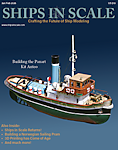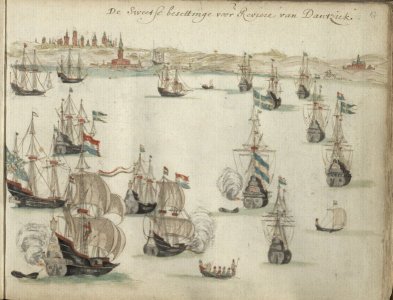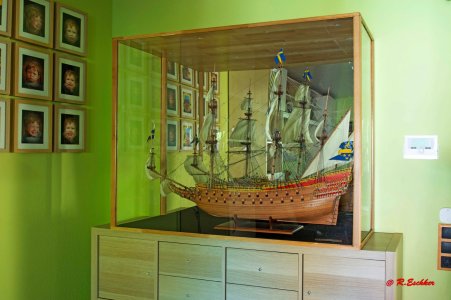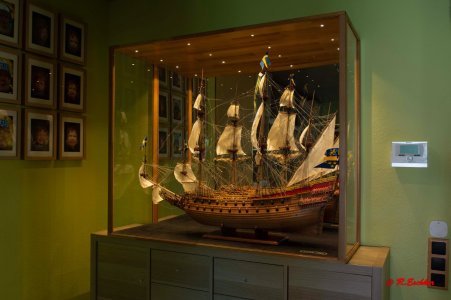The construction of the Vasa was a prestige project for Sweden. It was equipped with 64 cannons, which were to equal the firepower of the entire Polish fleet. The ship was around 69 metres long, 12 metres wide and almost 52 metres high at the main mast. The total sail area was around 1,300 m² and the aft deck was 20 metres above water level.
After Gustav II Adolf learned that the enemy had a similarly large ship built, he ordered in 1627 that the same number and calibre of cannons be installed on the upper battery deck as on the lower battery deck in order to further increase the firepower. This was a serious mistake: the entire statics of the ship, which was controlled by ballast stones in the hull, got out of control. Due to the increased mass, the openings for the lower cannons were already below the waterline at low heeling, with the increased centre of gravity further increasing the wind- or rudder-induced heeling.
Over 700 statues, whose grimacing faces were intended to demonstrate Sweden's strength and humiliate and frighten the enemy, adorned the Vasa. It was a swarm of Roman warriors, lions, mermaids, fantasy figures and Greek deities. The figures were created in the Renaissance and early Baroque style. The inspiration came mainly from the Bible, but also from Greek and Roman legends and glorified Swedish royal family trees.
The model was built to a scale of 1:65 using a subscription kit from de Agostini. In contrast to the original kit, the panelling, keel, rudder and all visible timbers (as far as possible) are made of pear wood. I also tried to incorporate details from the construction plans by Wolfram zu Mondfeld and Björn Landström. The construction time was about 3 years
The dimensions are as follows:
Length: 1250 mm
Width: 390 mm
Height: 920 mm
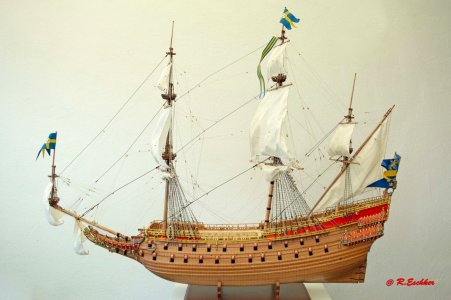
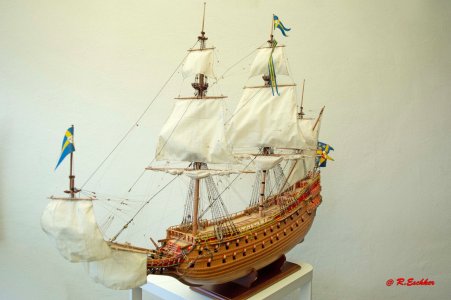
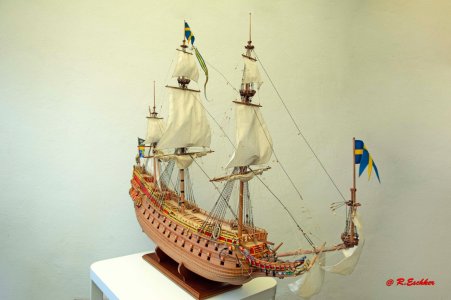
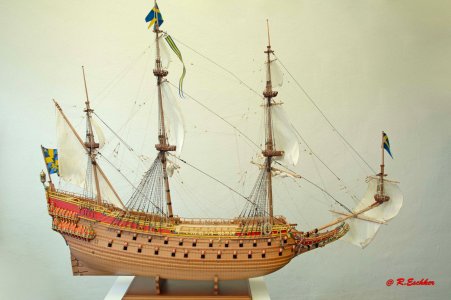
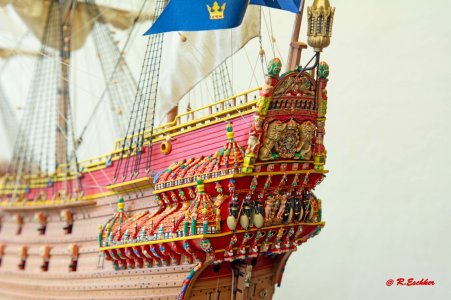
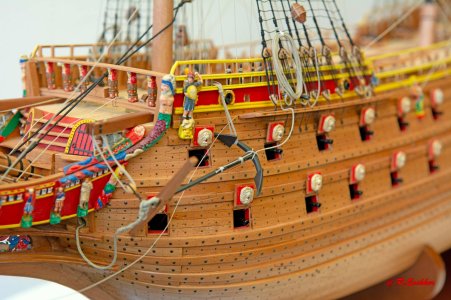
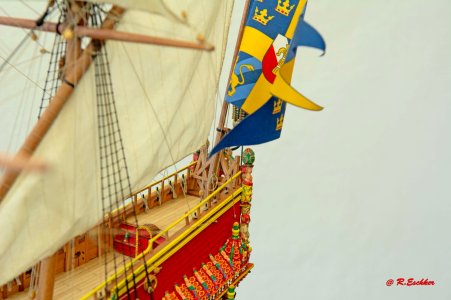
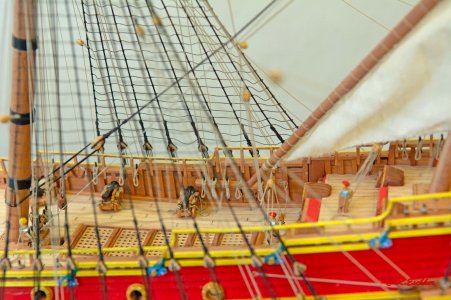
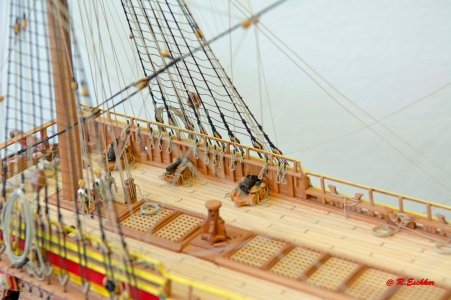
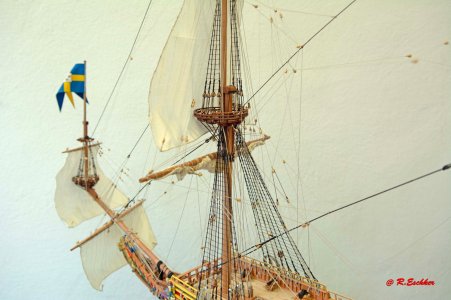
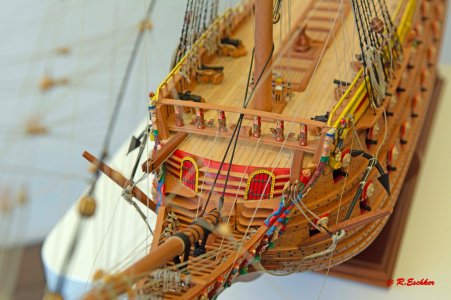
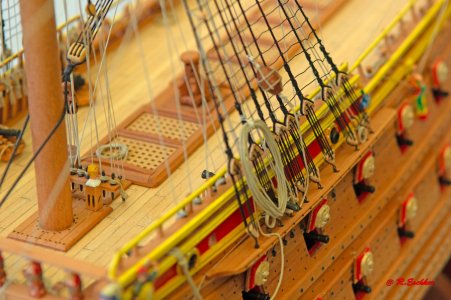
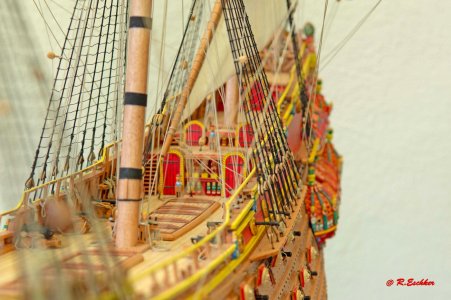
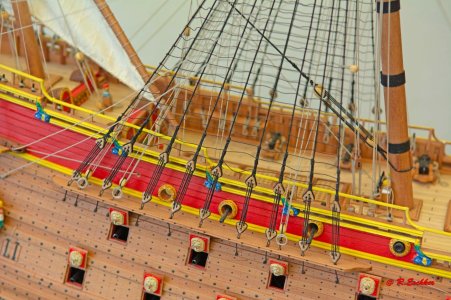
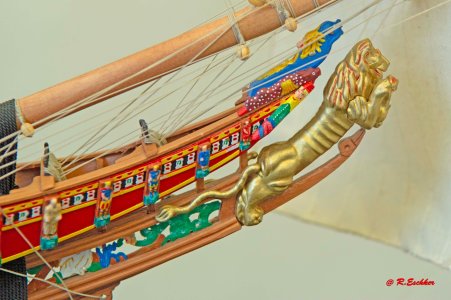
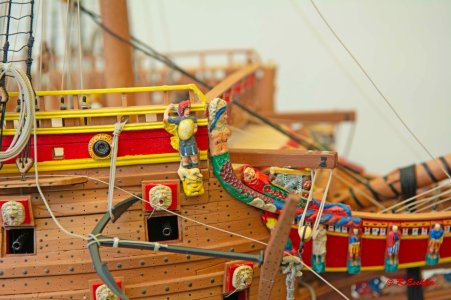
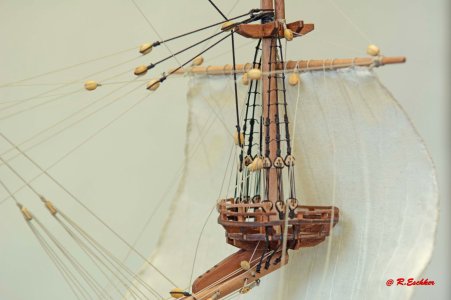
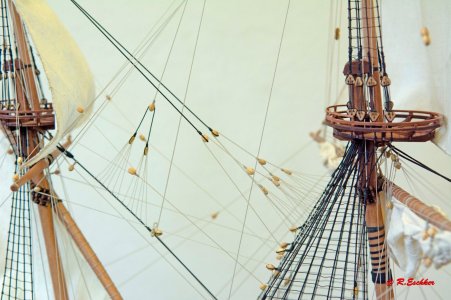
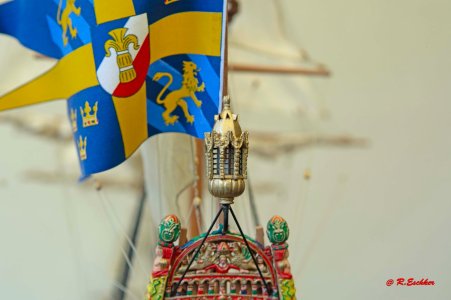
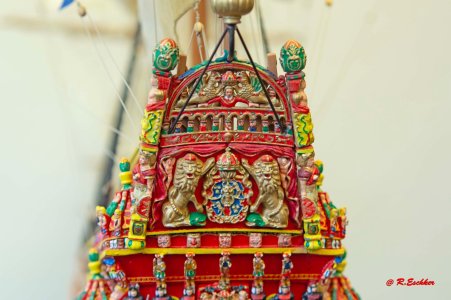
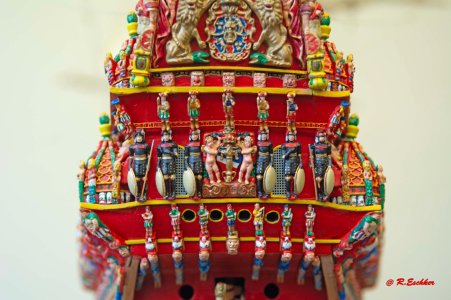
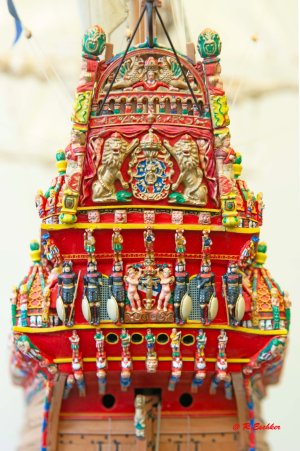
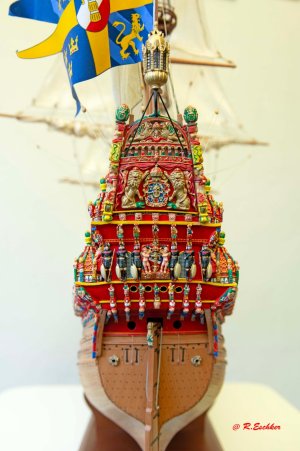
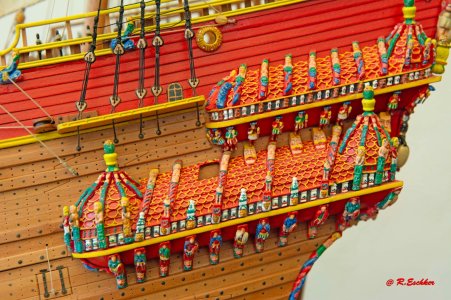
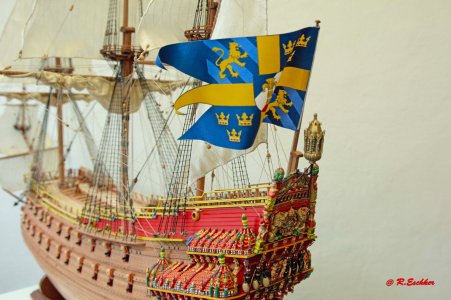
Greetings
Ruediger
After Gustav II Adolf learned that the enemy had a similarly large ship built, he ordered in 1627 that the same number and calibre of cannons be installed on the upper battery deck as on the lower battery deck in order to further increase the firepower. This was a serious mistake: the entire statics of the ship, which was controlled by ballast stones in the hull, got out of control. Due to the increased mass, the openings for the lower cannons were already below the waterline at low heeling, with the increased centre of gravity further increasing the wind- or rudder-induced heeling.
Over 700 statues, whose grimacing faces were intended to demonstrate Sweden's strength and humiliate and frighten the enemy, adorned the Vasa. It was a swarm of Roman warriors, lions, mermaids, fantasy figures and Greek deities. The figures were created in the Renaissance and early Baroque style. The inspiration came mainly from the Bible, but also from Greek and Roman legends and glorified Swedish royal family trees.
The model was built to a scale of 1:65 using a subscription kit from de Agostini. In contrast to the original kit, the panelling, keel, rudder and all visible timbers (as far as possible) are made of pear wood. I also tried to incorporate details from the construction plans by Wolfram zu Mondfeld and Björn Landström. The construction time was about 3 years
The dimensions are as follows:
Length: 1250 mm
Width: 390 mm
Height: 920 mm

























Greetings
Ruediger


